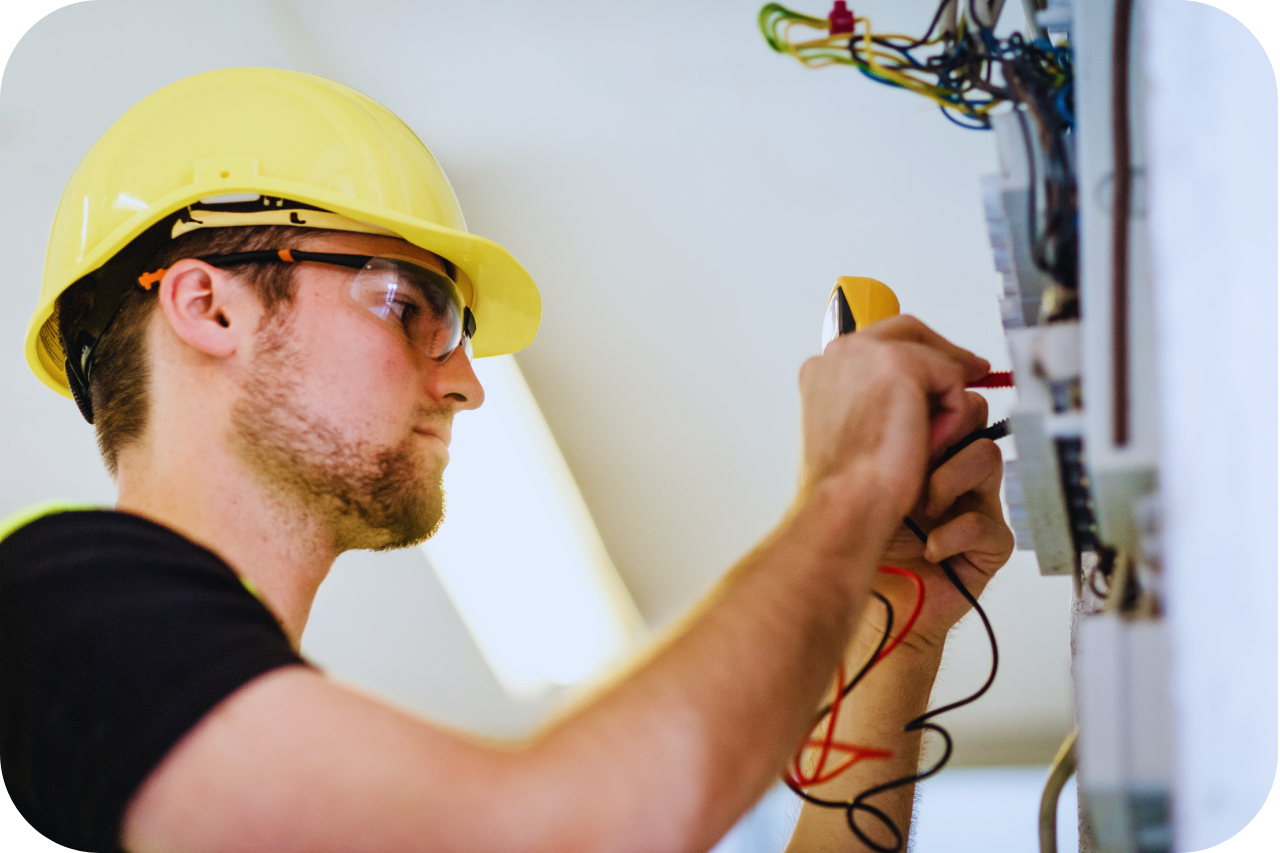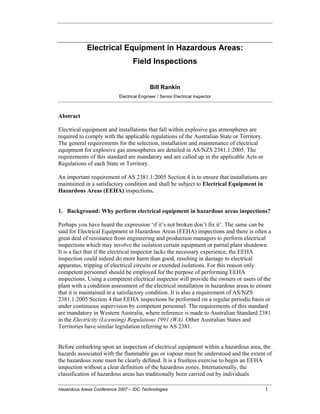Getting My Roar Solutions To Work
Getting My Roar Solutions To Work
Blog Article
Excitement About Roar Solutions
Table of ContentsThe Definitive Guide for Roar SolutionsThe Only Guide for Roar SolutionsRoar Solutions - Questions
In such an ambience a fire or explosion is possible when 3 basic problems are met. This is frequently described as the "unsafe area" or "combustion" triangular. In order to safeguard setups from a prospective explosion a technique of analysing and identifying a possibly unsafe location is required. The purpose of this is to make sure the right choice and installation of equipment to eventually prevent an explosion and to guarantee security of life.
(https://businesslistingplus.com/profile/roarsolutions/)
No tools needs to be set up where the surface area temperature of the equipment is better than the ignition temperature of the offered threat. Below are some usual dirt harmful and their minimum ignition temperature. Coal Dust 380C 225C Polythene 420C (thaws) Methyl Cellulose 420C 320C Starch 460C 435C Flour 490C 340C Sugar 490C 460C Grain Dirt 510C 300C Phenolic Material 530C > 450C Aluminium 590C > 450C PVC 700C > 450C Residue 810C 570C The chance of the danger being existing in a focus high sufficient to trigger an ignition will certainly vary from place to location.
In order to categorize this danger an installment is separated right into areas of risk relying on the quantity of time the dangerous is present. These locations are described as Zones. For gases and vapours and dirts and fibers there are three zones. Area 0 Area 20 A dangerous environment is highly likely to be existing and may exist for long durations of time (> 1000 hours annually) or perhaps continually Zone 1 Zone 21 A hazardous ambience is feasible yet not likely to be existing for extended periods of time (> 10 450 C [842 F] A category of T6 means the minimal ignition temperature is > 85 C [185 F] Unsafe location electrical equipment maybe developed for usage in higher ambient temperatures. This would suggested on the score plate e.g. EExe II C T3 Ta + 60C( This suggests at 60C ambient T3 will certainly not be gone beyond) T1 T1, T2, T3, T4, T5, T6 T2 T2, T3, T4, T5, T6 T3 T3, T4, T5, T6 T4 T4, T5, T6 T5 T5, T6 T6 T6 A T Course score of T1 implies the maximum surface temperature level produced by the tool at 40 C is 450 C. Presuming the linked T Course and Temperature rating for the devices are proper for the location, you can constantly utilize a tool with an extra rigorous Department score than needed for the area. There isn't a clear answer to this question. It actually does rely on the sort of tools and what repairs need to be performed. Tools with details examination treatments that can not be performed in the area in order to achieve/maintain 3rd event score. Should come back to the factory if it is before the equipment's solution. Area Repair Service By Authorised Personnel: Complicated screening might not be required however certain procedures might require to be adhered to in order for the equipment to preserve its 3rd party score. Authorized employees should be used to do the work appropriately Fixing have to be a like for like substitute. New part must be considered as a straight substitute needing no special screening of the equipment after the fixing is full. Each tool with a hazardous ranking ought to be reviewed independently. These are described at a high level below, but also for more comprehensive details, please refer directly to the guidelines.
What Does Roar Solutions Mean?
The equipment register is a comprehensive data source of devices documents that consists of a minimum set of areas to recognize each item's area, technical specifications, Ex-spouse category, age, and environmental information. This info is important for monitoring and taking care of the equipment efficiently within dangerous locations. In comparison, for routine or RBI tasting examinations, the quality will be a mix of Thorough and Close evaluations. The ratio of In-depth to Close inspections will be figured out by the Equipment Risk, which is examined based on ignition risk (the probability of a resource of ignition versus the chance of a flammable atmosphere )and the dangerous location classification
( Zone 0, 1, or 2). This variation will certainly likewise influence the resourcing needs for job preparation. As soon as Whole lots are defined, you can establish sampling strategies based on the example size of each Lot, which refers to the number of random equipment things to be checked. To figure out the required example size, two facets need to be examined: the size of the Lot and the group of evaluation, which indicates the degree of effort that should be used( reduced, regular, or increased )to the inspection of the Whole lot. By incorporating the category of examination with the Great deal dimension, you can after that develop the ideal rejection standards for an example, implying the allowed variety of faulty things found within that example. For more details on this process, please refer to the Energy Institute Standards. The IEC 60079 Continued typical recommends that the optimum period between inspections should not go beyond three years. EEHA assessments will certainly likewise be conducted outside of RBI projects as component of scheduled maintenance and equipment overhauls or fixings. These assessments can be attributed toward the RBI example sizes within the impacted Whole lots. EEHA evaluations are carried out to identify mistakes in electric tools. A weighted scoring system is important, as a single tool may have multiple faults, each with differing degrees of ignition danger. If the combined score of both inspections is much less than twice the fault score, the Lot is considered appropriate. If the Great deal is still taken into consideration unacceptable, it needs to undergo a complete examination or validation, which might trigger stricter inspection procedures. Accepted Lot: The root causes of any mistakes are identified. If a typical failure mode is found, additional tools may need maintenance. Mistakes are identified by extent( Safety and security, Integrity, Housekeeping ), ensuring that urgent concerns are assessed and addressed without delay to minimize any impact on safety and security or operations. The EEHA database ought to track and tape the lifecycle of faults in addition to the corrective activities taken. Implementing a robust Risk-Based Examination( RBI )technique is crucial for guaranteeing conformity and safety in taking care of Electric Tools in Hazardous Locations( EEHA) (Roar Solutions). Automated Mistake Rating and Lifecycle Administration: Effortlessly manage mistakes and track their lifecycle to enhance inspection accuracy. The intro of this assistance for risk-based examination additionally reinforces Inspectivity's setting as a best-in-class solution for governing conformity, as well as for any kind of asset-centric inspection use situation. If you want discovering much more, we welcome you to request a demo and find just how our remedy can transform your EEHA monitoring procedures.
Not known Facts About Roar Solutions

In terms of explosive danger, a dangerous location is a setting in which an explosive atmosphere exists (or may be anticipated to be present) in quantities that need special precautions for the construction, installment and use equipment. high voltage courses. In this post we check out the obstacles encountered in the workplace, the danger control actions, and the called for expertises to work securely
These compounds can, in particular conditions, develop eruptive ambiences and these can have significant and heartbreaking effects. Most of us are acquainted with the fire triangular eliminate any type of one of the 3 elements and the fire can not happen, but what does this mean in the context of dangerous locations?
In a lot of circumstances, we can do little about the degrees of oxygen in the air, but we can have significant impact on sources of ignition, for example electrical tools. Dangerous areas are recorded on the dangerous area category drawing and are identified on-site by the triangular "EX LOVER" sign. Right here, amongst other key information, areas are split right into 3 types depending upon the risk, the likelihood and period that an eruptive ambience will certainly exist; Zone 0 or 20 is deemed one of the most harmful and Area 2 or 22 is regarded the least.
Report this page